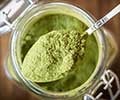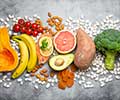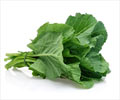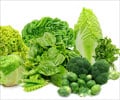- Saha, J. et al. Chemical composition of some underutilized green leafy vegetables of Sonitpur district of Assam, India. International Food Research Journal 22(4): 1466-1473 (2015)
- Subhash B. Kakade, Neeha V.S. Dehydration of Green Leafy Vegetable: Review. 2014 IJIRT | Volume 1 Issue 8
- Peter,C. et al. Retention of Â- Carotene, Iron and Zinc in Solar Dried Amaranth Leaves in Kajiado County, Kenya. International Journal of Sciences: Basic and Applied Research (IJSBAR) (2014) Volume 13, No 2, pp 329-338
- Ankita and K. Prasad. Characterization of dehydrated functional fractional radish leaf powder. Der Pharmacia Lettre, 2015, 7 (1):269-279
- Know your Greens, Tarla Dalal, Sanjay & Company
- S. Banerjee, A. Joglekar and M. Mishra. A critical review on importance of green leafy vegetables. International Journal of Applied Home Science. Volume 2 (3&4), March & April (2015) : 124-132
- Satwase, A. et al. Studies on Drying Characteristic and Nutritional Composition of Drumstick Leaves by Using Sun, Shadow, Cabinet and Oven Drying Methods. Open Access Scientific Reports. Volume 2 • Issue 1 • 2013
Lesser known Dark Green Leafy Vegetables
People all around the world have recognised the importance of eating dark green leafy vegetables often in their daily diets. As known to many, Dark Green leafy vegetables (DGLVs) contain nutrients helpful in maintaining human health and vitality. They are indispensable in a well-balanced diet and are a store house of beta carotene, vitamin C, riboflavin, folic acid and minerals like calcium, iron and phosphorous which are hard to obtain from staple foods. They are high in lutein and zeaxanthine, which have been identified as important eye protective agents. Being rich in dietary fibre, they help to maintain gut health. In addition they render important health benefits like glycemic control and immuno-stimulation. They represent an important proportion of foods with medicinal value. Ironically they are the cheapest of all the vegetables and richest in terms of their nutrition.
A number of Green Leafy Vegetables (GLVs) are consumed all across India. Frequently consumed ones include spinach, fenugreek, mint, coriander, curry leaves to name a few. In addition to them are a plethora of underutilized greens of promising food value.
Research on the nutrient content of underutilized greens, domesticated or wild, shows them to be containing higher levels of β - carotene, iron and zinc compared to the commonly consumed and exotic ones such as spinach and kale. Some of the greens contain comparatively higher amounts of protein too.
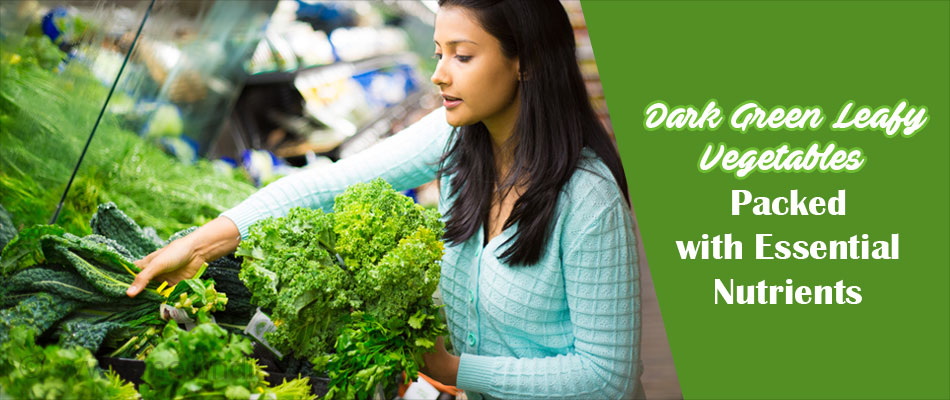
The lack of knowledge about them, their health implications, availability and method of preparation could be attributed to the main drawbacks for the low consumption. Their usage is limited to specific geographical locations in India.
The Nourishing Greens
1. Amaranth or Cowpea Leaves (Chawli)
Amaranth does not differ significantly from other green vegetables in terms of appearance, texture and flavor. It is grown all over India. It is usually short lived, has erect, thick and fleshy stems. Red amaranth is also a variant commonly available. Amaranth leaves are dense in calcium, beta carotene, iron and zinc. Unlike other green leafy vegetables, they contain low levels of antinutrients (tannin and phytates) which hinder the absorption of minerals.
A simple, easy and scrumptious vegetable called “chawli bhaji” is commonly prepared with these leaves. They are also a wonderful addition to dals, curries and parathas.
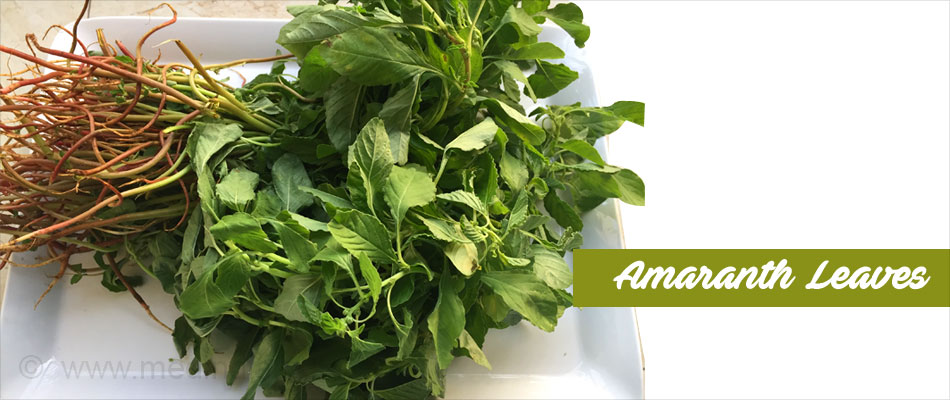
2. Drumstick Leaves (Saragva or Murungai Keerai)
The Drumstick or Moringa tree is one of the most useful tropical trees. India is the largest producer of Moringa. It is widely cultivated in tropical areas. It is most commonly and locally available throughout the year in the southern region of India. The leaves are small and round, green in color, most commonly used in South Indian cuisine.
The leaves are highly nutritious, being a significant source of beta-carotene and proteins. Like amaranth these are also free of antinutritive factors such as phenols, tannins and saponins thus increasing the bioavailabiliy of nutrients. One of most important component of leaves is Quercetin, used as inhibitor for the growth of cancer cell in human being. The leaves have been elevated to the status of a #$##$#superfood#$##$# by the U.N. and have been used to combat malnutrition, majorly among infants and nursing mothers.
The leaves are added to dhals and sambhars in South India. They are made into a curry dish by mixing with coconut, poppy seeds and mustard. Finely chopped leaves make an excellent garnish for any vegetable dish or salad.
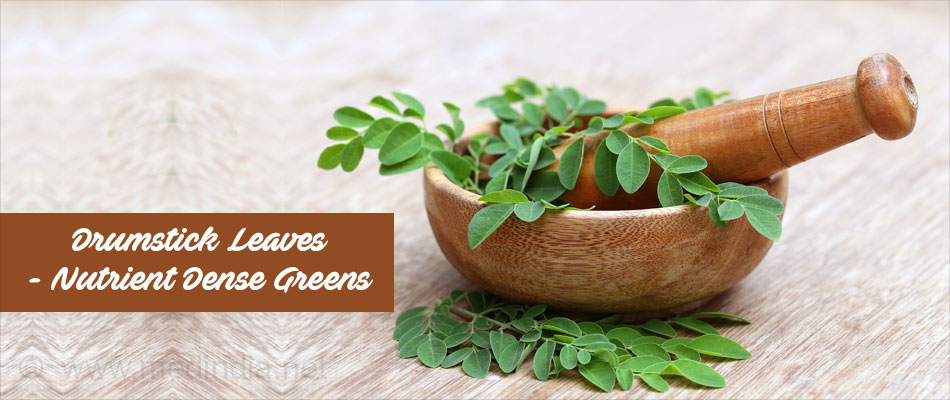
3. Mustard Leaves (Sarson)
Mustard Leaves are dark green colored broad leaves found during winter months. They have a pungent peppery flavor and are mostly used in North Indian cuisine. Mustard leaves are a storehouse of phytonutrients. They contain a very good amount of fibre, much more than the commonly used greens and are a rich source of vitamin K, vitamin C, beta carotene and folic acid. They are an excellent source of minerals too.
Mustard leaves are the main ingredient of the famous North Indian vegetable dish “Sarson ka Saag”. The greens are chopped finely, boiled and cooked along with other greens, spinach and bathua.
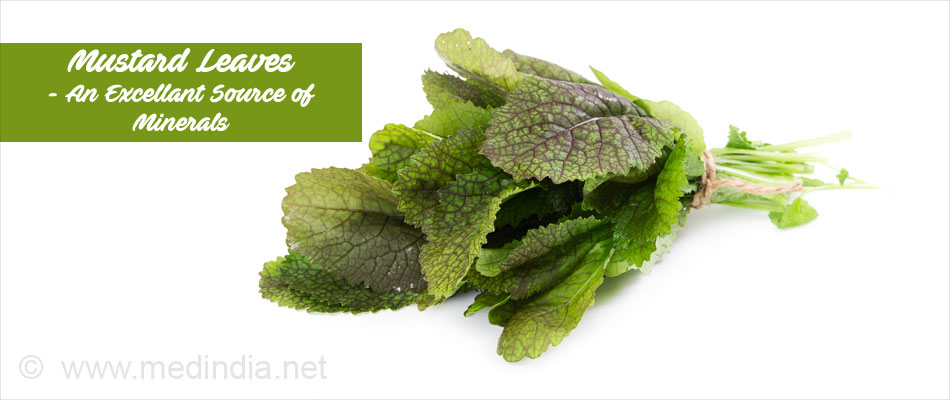
4. Bathua Leaves (Cheel bhaji, Paruppu Keerai)
Bathua leaves are a wild relative of the spinach plant. Like sarson it is also available in the winter season. The leaves have a wavy or coarsely-toothed margin with a soft gray or white mealy coating. They taste delicious and have an earthy flavor. The leafy vegetable is nutrient dense and easy to incorporate in dishes. The steamed greens coupled with curds make a delicious raita. It can be added to lentils to make dals or made into a vegetable.
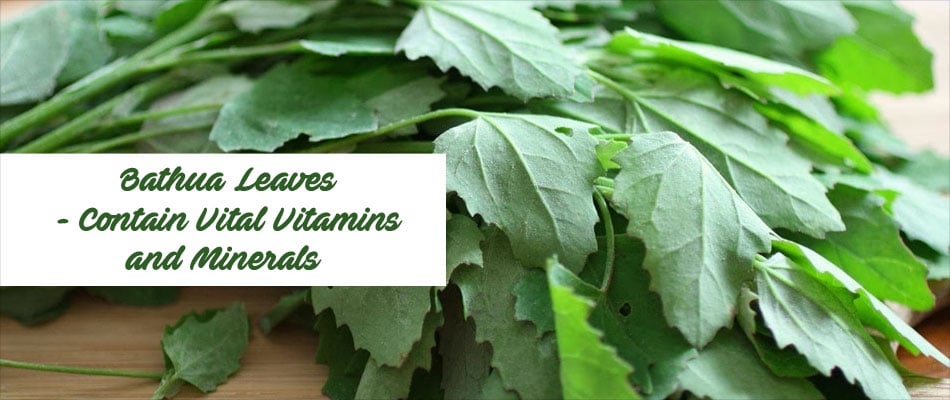
5. Raddish Leaves (Mooli ke patte)
Radish is the one of the most ancient, widely cultivated, quick growing, cool season root vegetable. Both leaves and the root of radish have variety of health benefits and are used in the treatment of various diseases. The root of this short season vegetable is normally consumed as a vegetable and the tops as a leafy vegetable. The plant provides a variety of cancer-preventive phytochemicals in form of polyphenols, terpenes, indols and sulphur containing compounds.
Radish leaves are rich source of calcium, iron and ascorbic acid. As it is good source of potassium, it is found helpful in maintaining the blood pressure. They have diuretic and laxative properties. The leaves are a very good source of protein too.
The greens are generally used along with the root to make a crunchy stir fried vegetable, parathas and dumplings.
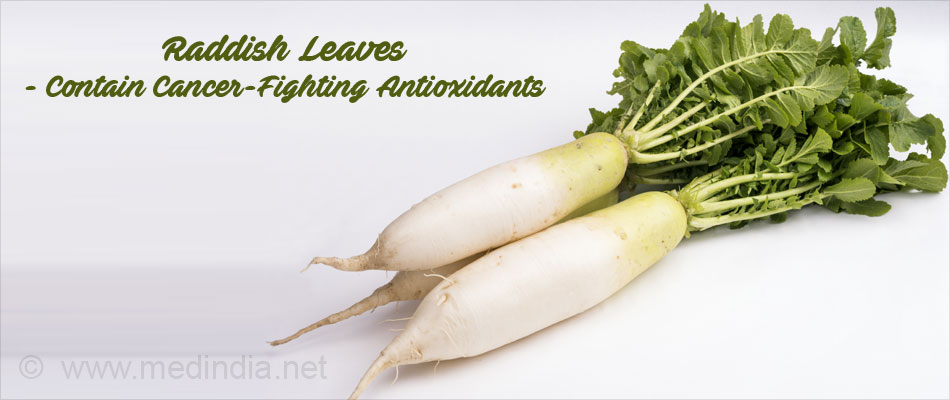
6. Colocassia Leaves (Arbi ke patte)
Like potatoes, beetroot, yam, colocassia is a tuber with huge heart shaped leaves. They are commonly available throughout the year in western parts of India and are used to prepare traditional dishes. Arbi leaves apart from being immensely rich in beta carotene are highly versatile as well.
Some tasty dishes can be easily whipped up with these beautiful looking leaves. It takes away all the fussiness associated with consuming greens. The leaves are stacked up rolled into spirals with a spiced chickpea paste, steamed and then shallow fried to make a famous snack called “patra”. The leaves can be easily combined with other vegetables or stuffed and steamed.

7. Dill leaves (shepu/suva)
Dill is one of those herbs that is available in two different forms in two different seasons. In early spring it is used for its leaves and then later in fall it is used for its seeds.
Fresh dill leaves are available at markets during the summer and early fall while dried leaves are available throughout the year. Fresh dill leaves are sold as cuttings (sprigs) bundled into convenient amounts. The leaves have a simple clean taste and both the fresh and dried leaves are used as herbs. The grass like leaves is rich in in minerals, vitamin C and flavonoids.
Fresh leaves when added to curds make an aromatic refreshing yogurt. The leaves are easy to incorporate in salads and dips. Cucumbers partners well with dill, either in salads, chilled soups or sandwiches. It can be added to hung curds or butter to make homemade bread spread. The crisp taste of dill leaves make a good green vegetable and are traditionally paired with Bajra or Jowar roti. They are coupled with other greens to make the very famous vegetable “sai bhaji”. Fresh sprigs should be added to a dish at the last minute for maximum aroma and flavor.

Dehydration of Greens
Green leafy vegetables are highly seasonal, available abundantly at cheaper rates during peak season and quickly spoil due to glut. These stand out among eatables because of their color, flavor and health benefits.
Drying is one of the most possible strategies for preservation of greens, which are highly seasonal, perishable and locally available. Micronutrient deficiencies especially vitamin A, iron and zinc remains a big challenge in the world. The untapped greens are rich in these micronutrients and can be used to fill the gap.
Fresh leaves can be dried and stored as powders using appropriate technology to ensure availability throughout the year. Various drying methods (cabinet, oven, solar drying, sun drying) have been extensively studied to preserve the lesser known greens. All the studies advocate blanching of the greens before drying to retain color and flavor, minimize nutrient loss, stop decomposition, ensure even drying and extend storage life. Though drying leads to loss of a proportion of the water-soluble vitamins, fat soluble vitamins like beta carotene are fairly well-retained. The anti-nutrient content is also seen to lessen with various processing methods.
It has been studied that drumstick leaves could retain much of their beta carotene on shade dehydration and the dehydrated leaves could be easily rehydrated and incorporated into traditional Western Indian recipes without alteration in acceptability characteristics.
Dehydration technique results in concentration of nutrients which gives it a possibility of using them in different products for enrichment.
Dehydrated vegetable powders can be used in different traditional as well as commercial products for value addition purpose. Dry powders can be added to various food preparations at the household level. Children rarely consume such greens in the fresh form and thus drying would enable them be incorporated in common meals.
The abundantly available inexpensive greens can serve as a pool house of nutrients if efforts are made to include them in the diet.


